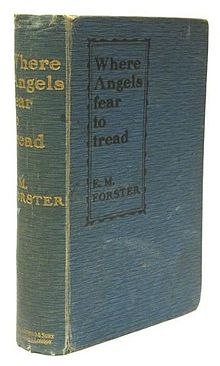tutorial, characters, resources, video, further reading
A Room with a View (1905) is a comedy of manners and a satirical critique of English stuffiness and hypocrisy. Lucy Honeychurch must choose between cultured but emotionally frozen Cecil Vyse and the impulsive George Emerson. The Surrey stockbroker belt is contrasted with the magic of Florence, where she eventually ends up on her honeymoon. Upper middle-class English tourists in Italy are an easy target for Forster in some very amusing scenes.

E.M.Forster
E.M. Forster is a bridge between the nineteenth and the twentieth century novel. He documents the Edwardian and Georgian periods in a witty and elegant prose, satirising the middle and upper classes he knew so well. He was a friend of Virginia Woolf, with whom he worked out some of the ground rules of literary modernism. These included the concept of ‘tea-tabling’ – making the substance of serious fiction the ordinary events of everyday life. He was also a member of The Bloomsbury Group.
His novels grew in complexity and depth, until he eventually gave up fiction in 1923. This was because he no longer felt he could write about the subject of heterosexual love which he did not know or feel. Instead, he turned to essays – which are well worth reading.
A Room with a View – plot summary
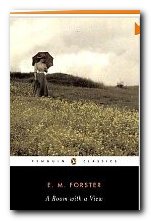 Lucy Honeychurch, a young upper middle class woman, visits Italy under the charge of her older cousin Charlotte. At their guesthouse, in Florence, they are given rooms that look into the courtyard rather than out over the river Arno. Mr. Emerson, a fellow guest, generously offers them the rooms belonging to himself and his son George. Lucy is an avid young pianist. Mr. Beebe an English clergyman guest, watches her passionate playing and predicts that someday she will live her life with as much gusto as she plays the piano.
Lucy Honeychurch, a young upper middle class woman, visits Italy under the charge of her older cousin Charlotte. At their guesthouse, in Florence, they are given rooms that look into the courtyard rather than out over the river Arno. Mr. Emerson, a fellow guest, generously offers them the rooms belonging to himself and his son George. Lucy is an avid young pianist. Mr. Beebe an English clergyman guest, watches her passionate playing and predicts that someday she will live her life with as much gusto as she plays the piano.
Lucy’s visit to Italy is marked by several significant encounters with the Emersons. George explains that his father means well, but always offends everyone. Mr. Emerson tells Lucy that his son needs her in order to overcome his youthful melancholy. Later, Lucy comes in close contact with two quarreling Italian men. One man stabs the other, and she faints, to be rescued (and kissed) by George.
On a country outing in the hills, Lucy again encounters George, who is standing on a terrace covered with blue violets. George kisses her again, but this time Charlotte sees him and chastises him and leaves with Lucy for Rome the next day.
The second half of the book centers on Lucy’s home in Surrey, where she lives with her mother and her brother, Freddy. A man she met in Rome, the snobbish Cecil Vyse, proposes marriage to her for the third time, and she accepts him. He disapproves of her family and the country people she knows. There is a small, ugly villa available for rent in the town, and as a joke, Cecil offers it to the Emersons, whom he meets by chance in a museum. They take him up on the offer and move in, much to Lucy’s initial horror.
George plays tennis with the Honeychurches on a Sunday when Cecil is at his most intolerable. Cecil reads from a book by Miss Lavish, a woman who also stayed with Lucy and Charlotte in Florence. The novel records a kiss among violets, so Lucy realizes that Charlotte let the secret out. In a moment alone, George kisses her again. Lucy tells him to leave, but George insists that Cecil is not the right man for her. Lucy sees Cecil in a new light, and breaks off her engagement that night.
However, Lucy will not believe that she loves George; she wants to stay unmarried and travel to Greece with some elderly women she met in Italy. She meets old Mr. Emerson by chance, who insists that she loves George and should marry him, because it is what her soul truly wants. Lucy realizes he is right, and though she must fly against convention, she marries George, and the book ends with the happy couple staying together in the Florence pension again, in a room with a view.
Study resources
![]() A Room with a View – Penguin Classics – Amazon UK
A Room with a View – Penguin Classics – Amazon UK
![]() A Room with a View – Penguin Classics – Amazon US
A Room with a View – Penguin Classics – Amazon US
![]() A Room with a View – unabridged classics Audio CD – Amazon UK
A Room with a View – unabridged classics Audio CD – Amazon UK
![]() A Room with a View – BBC audio books edition – Amazon UK
A Room with a View – BBC audio books edition – Amazon UK
![]() A Room with a View – Merchant-Ivory film on VHS – Amazon UK
A Room with a View – Merchant-Ivory film on VHS – Amazon UK
![]() A Room with a View – eBook version at Project Gutenberg
A Room with a View – eBook version at Project Gutenberg
![]() A Room with a View – audioBook version at LibriVox
A Room with a View – audioBook version at LibriVox
![]() The Cambridge Companion to E.M.Forster – Amazon UK
The Cambridge Companion to E.M.Forster – Amazon UK
![]() E.M.Forster at Wikipedia – biographical notes, links
E.M.Forster at Wikipedia – biographical notes, links
![]() E.M.Forster at Mantex – tutorials, web links, study resources
E.M.Forster at Mantex – tutorials, web links, study resources
Principal characters
| Lucy Honeychurch | a musical and spirited girl |
| Mrs Honeychurch | her mother, a widow |
| Freddy | her brother |
| Charlotte Bartlett | Lucy’s older, poorer cousin and an old maid |
| Mr Emerson | a liberal, plain-speaking widower |
| George Emerson | his truth-seeking son |
| Cecil Vyse | an over-cultivated snob |
| Mr Beebe | the rector in Lucy’s home town |
| Miss Lavish | lady novelist with strident, commonplace views |
| Mr Eager | self-righteous British chaplain in Florence |
A Room with a View – film version
Merchant-Ivory 1985 film adaptation
This is a production which takes one or two minor liberties with the original novel. But it’s beautifully acted, with the deliciously pouting Helena Bonham Carter as the heroine Lucy, plus Denholm Eliot as Mr Emerson, Daniel Day-Lewis as a wonderfully pompous Cecil Vyse, and Maggie Smith as the poisonous hanger-on Charlotte. The settings are delightfully poised between Florentine Italy and the home counties stockbroker belt. I’ve watched it several times, and it never ceases to be visually elegant and emotionally well observed. This film was nominated for eight Academy awards when it appeared, and put the Merchant-Ivory team on the cultural map.
![]() See reviews of the film at the Internet Movie Database
See reviews of the film at the Internet Movie Database
Further reading
![]() David Bradshaw, The Cambridge Companion to E.M. Forster, Cambridge University Press, 2007
David Bradshaw, The Cambridge Companion to E.M. Forster, Cambridge University Press, 2007
![]() Richard Canning, Brief Lives: E.M. Forster, London: Hesperus Press, 2009
Richard Canning, Brief Lives: E.M. Forster, London: Hesperus Press, 2009
![]() G.K. Das and John Beer, E. M. Forster: A Human Exploration, Centenary Essays, New York: New York University Press, 1979.
G.K. Das and John Beer, E. M. Forster: A Human Exploration, Centenary Essays, New York: New York University Press, 1979.
![]() Mike Edwards, E.M. Forster: The Novels, London: Palgrave Macmillan, 2001
Mike Edwards, E.M. Forster: The Novels, London: Palgrave Macmillan, 2001
![]() E.M. Forster, Aspects of the Novel, London: Penguin Classics, 2005
E.M. Forster, Aspects of the Novel, London: Penguin Classics, 2005
![]() P.N. Furbank, E.M. Forster: A Life, Manner Books, 1994
P.N. Furbank, E.M. Forster: A Life, Manner Books, 1994
![]() Frank Kermode, Concerning E.M. Forsterl, London: Weidenfeld and Nicolson, 2009
Frank Kermode, Concerning E.M. Forsterl, London: Weidenfeld and Nicolson, 2009
![]() Rose Macaulay, The Writings of E. M. Forster, New York: Barnes and Noble, 1970.
Rose Macaulay, The Writings of E. M. Forster, New York: Barnes and Noble, 1970.
![]() Nigel Messenger, How to Study an E.M. Forster Novel, London: Palgrave Macmillan, 1991
Nigel Messenger, How to Study an E.M. Forster Novel, London: Palgrave Macmillan, 1991
![]() Wendy Moffatt, E.M. Forster: A New Life, London: Bloomsbury Publishing, 2010
Wendy Moffatt, E.M. Forster: A New Life, London: Bloomsbury Publishing, 2010
![]() Nicolas Royle, E.M. Forster (Writers and Their Work), Northcote House Publishers, 1999
Nicolas Royle, E.M. Forster (Writers and Their Work), Northcote House Publishers, 1999
![]() Jeremy Tambling (ed), E.M. Forster: Contemporary Critical Essays, London: Palgrave Macmillan, 1995
Jeremy Tambling (ed), E.M. Forster: Contemporary Critical Essays, London: Palgrave Macmillan, 1995
A Room with a View – film interview
Daniel Day Lewis on Cecil Vyse
Other works by E.M. Forster
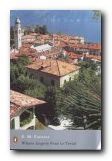 Where Angels Fear to Tread (1902) is Forster’s first novel and a very witty debut. A spirited middle-class English girl goes to Italy and becomes involved with a local man. The English family send out a party to ‘rescue’ her (shades of Henry James) – but they are too late; she has already married him. But when a baby is born, the family returns with renewed hostility. The clash between Mediterranean living spirit and deadly English rectitude is played out with amusing and tragic consequences.
Where Angels Fear to Tread (1902) is Forster’s first novel and a very witty debut. A spirited middle-class English girl goes to Italy and becomes involved with a local man. The English family send out a party to ‘rescue’ her (shades of Henry James) – but they are too late; she has already married him. But when a baby is born, the family returns with renewed hostility. The clash between Mediterranean living spirit and deadly English rectitude is played out with amusing and tragic consequences.
![]() Buy the book at Amazon UK
Buy the book at Amazon UK
![]() Buy the book at Amazon US
Buy the book at Amazon US
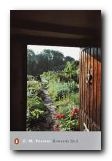 Howards End (1910) is a State of England novel, and possibly Forster’s greatest work – though that’s just my opinion. Two families are contrasted: the intellectual and cultivated Schlegels, and the capitalist Wilcoxes. A marriage between the two leads to spiritual rivalry over the possession of property. Following on their social coat tails is a working-class would-be intellectual who is caught between two conflicting worlds. The outcome is a mixture of tragedy and resignation, leavened by hope for the future in the young and free-spirited.
Howards End (1910) is a State of England novel, and possibly Forster’s greatest work – though that’s just my opinion. Two families are contrasted: the intellectual and cultivated Schlegels, and the capitalist Wilcoxes. A marriage between the two leads to spiritual rivalry over the possession of property. Following on their social coat tails is a working-class would-be intellectual who is caught between two conflicting worlds. The outcome is a mixture of tragedy and resignation, leavened by hope for the future in the young and free-spirited.
![]() Buy the book at Amazon UK
Buy the book at Amazon UK
![]() Buy the book at Amazon US
Buy the book at Amazon US
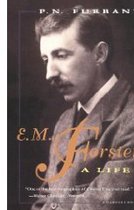 E.M.Forster: A Life is a readable and well illustrated biography by P.N. Furbank. This book has been much praised for the sympathetic understanding Nick Furbank brings to Forster’s life and work. It is also a very scholarly book, with plenty of fascinating details of the English literary world during Forster’s surprisingly long life. It has become the ‘standard’ biography, and it is very well written too. Highly recommended.
E.M.Forster: A Life is a readable and well illustrated biography by P.N. Furbank. This book has been much praised for the sympathetic understanding Nick Furbank brings to Forster’s life and work. It is also a very scholarly book, with plenty of fascinating details of the English literary world during Forster’s surprisingly long life. It has become the ‘standard’ biography, and it is very well written too. Highly recommended.
© Roy Johnson 2010
More on E.M. Forster
More on the novella
More on literary studies
More on short stories
 1879. E.M.Forster (Edward Morgan) born in London. His father dies the following year.
1879. E.M.Forster (Edward Morgan) born in London. His father dies the following year. E.M.Forster: A Life
E.M.Forster: A Life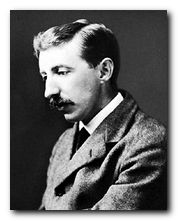 E.M.Forster is often seen as a bridge between the nineteenth and the twentieth century novel. He documents the Edwardian and Georgian periods in a witty and elegant prose, satirising the middle and upper classes he knew so well. He was a friend of Virginia Woolf, with whom he worked out some of the ground rules of literary modernism. These included the concept of what they called ‘tea-tabling’ – making the substance of serious fiction the ordinary events of everyday life. He was also an inner member of
E.M.Forster is often seen as a bridge between the nineteenth and the twentieth century novel. He documents the Edwardian and Georgian periods in a witty and elegant prose, satirising the middle and upper classes he knew so well. He was a friend of Virginia Woolf, with whom he worked out some of the ground rules of literary modernism. These included the concept of what they called ‘tea-tabling’ – making the substance of serious fiction the ordinary events of everyday life. He was also an inner member of 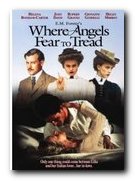 Where Angels Fear to Tread – DVD This film version is not a Merchant-Ivory production, although it’s done very much in their style. But it is accurate and entirely sympathetic to the spirit of the novel, possibly even stronger in satirical edge, well acted, and superbly beautiful to watch. Much is made of the visual contrast between the beautiful Italian setting and the straight-laced English capital from which the prudery and imperialist spirit emerges. The lovely Helena Bonham-Carter establishes herself as the perfect English Rose in this her breakthrough production. Helen Mirren is wonderful as the spirited Lilia who defies English prudery and narrow-mindedness and marries for love – with results which manage to upset everyone.
Where Angels Fear to Tread – DVD This film version is not a Merchant-Ivory production, although it’s done very much in their style. But it is accurate and entirely sympathetic to the spirit of the novel, possibly even stronger in satirical edge, well acted, and superbly beautiful to watch. Much is made of the visual contrast between the beautiful Italian setting and the straight-laced English capital from which the prudery and imperialist spirit emerges. The lovely Helena Bonham-Carter establishes herself as the perfect English Rose in this her breakthrough production. Helen Mirren is wonderful as the spirited Lilia who defies English prudery and narrow-mindedness and marries for love – with results which manage to upset everyone.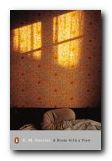 A Room with a View
A Room with a View A Room with a View – DVD This is a Merchant-Ivory production which takes one or two minor liberties with the original novel. But it’s still well acted, with the deliciously pouting Helena Bonham Carter as the heroine, Denholm Eliot as Mr Emerson, Daniel Day-Lewis as a wonderfully pompous Cecil Vyse, and Maggie Smith as the poisonous hanger-on Charlotte. The settings are delightfully poised between Florentine Italy and the home counties stockbroker belt. I’ve watched it several times, and it never ceases to be visually elegant and emotionally well observed. This film was nominated for eight Academy awards when it appeared, and put the Merchant-Ivory team on the cultural map.
A Room with a View – DVD This is a Merchant-Ivory production which takes one or two minor liberties with the original novel. But it’s still well acted, with the deliciously pouting Helena Bonham Carter as the heroine, Denholm Eliot as Mr Emerson, Daniel Day-Lewis as a wonderfully pompous Cecil Vyse, and Maggie Smith as the poisonous hanger-on Charlotte. The settings are delightfully poised between Florentine Italy and the home counties stockbroker belt. I’ve watched it several times, and it never ceases to be visually elegant and emotionally well observed. This film was nominated for eight Academy awards when it appeared, and put the Merchant-Ivory team on the cultural map.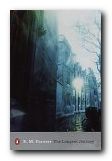 The Longest Journey
The Longest Journey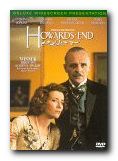 Howards End – DVD This is arguably Forster’s greatest work, and the film lives up to it. It is well acted, with very good performances from Emma Thompson and Helena Bonham Carter as the Schlegel sisters, and Anthony Hopkins as the bully Willcox. The locations and details are accurate, and it lives up to the critical, poignant scenes of the original – particularly the conflict between the upper middle-class Wilcoxes and the working-class aspirant Leonard Baskt. This is another adaptation which I have watched several times over, and always been impressed.
Howards End – DVD This is arguably Forster’s greatest work, and the film lives up to it. It is well acted, with very good performances from Emma Thompson and Helena Bonham Carter as the Schlegel sisters, and Anthony Hopkins as the bully Willcox. The locations and details are accurate, and it lives up to the critical, poignant scenes of the original – particularly the conflict between the upper middle-class Wilcoxes and the working-class aspirant Leonard Baskt. This is another adaptation which I have watched several times over, and always been impressed.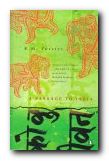 A Passage to India, (1923) was started in 1913 then finished partly in response to the Amritsar massacre of 1919. Snobbish and racist colonial administrators and their wives are contrasted with sympathetically drawn Indian characters. Dr Aziz is groundlessly accused of assaulting a naive English girl on a visit to the mystic Marabar Caves. There is a set piece trial scene, where she dramatically withdraws any charges. The results strengthen the forces of Indian nationalism, which are accurately predicted to be successful ‘after the next European war’ at the end of the novel. Issues of politics, race, and gender, set against vivid descriptions of Chandrapore and memorable evocations of the surrounding landscape. This is generally regarded as Forster’s masterpiece.
A Passage to India, (1923) was started in 1913 then finished partly in response to the Amritsar massacre of 1919. Snobbish and racist colonial administrators and their wives are contrasted with sympathetically drawn Indian characters. Dr Aziz is groundlessly accused of assaulting a naive English girl on a visit to the mystic Marabar Caves. There is a set piece trial scene, where she dramatically withdraws any charges. The results strengthen the forces of Indian nationalism, which are accurately predicted to be successful ‘after the next European war’ at the end of the novel. Issues of politics, race, and gender, set against vivid descriptions of Chandrapore and memorable evocations of the surrounding landscape. This is generally regarded as Forster’s masterpiece.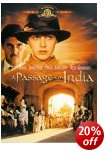 A Passage to India – DVD This adaptation by David Lean is something of a mixed bag. It’s well organised, reasonably true to the original, and has some visually spectacular scenes. James Fox is convincing as the central character Fielding. But it has tonal inconsistencies, and to cast Alec Guinness as the Indian mystic Godbole is verging on the ridiculous. Nevertheless there is some good cameo acting, particularly Edith Evans as Mrs Moore. Watch out for the Indian signpost half way through that looks as if it’s made out of cardboard.
A Passage to India – DVD This adaptation by David Lean is something of a mixed bag. It’s well organised, reasonably true to the original, and has some visually spectacular scenes. James Fox is convincing as the central character Fielding. But it has tonal inconsistencies, and to cast Alec Guinness as the Indian mystic Godbole is verging on the ridiculous. Nevertheless there is some good cameo acting, particularly Edith Evans as Mrs Moore. Watch out for the Indian signpost half way through that looks as if it’s made out of cardboard.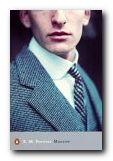 Maurice, (1967) is something from Forster’s bottom drawer. It was written in 1913-14, but not published until after his death. It’s an autobiographical novel of his gay university days which is explicit enough that couldn’t be published in his own lifetime. It’s light, amusing, and fairly inconsequential compared to the novels he wrote whilst pretending to be straight. This poses an interesting critical problem, when you would imagine he could have been more honest and therefore more successful.
Maurice, (1967) is something from Forster’s bottom drawer. It was written in 1913-14, but not published until after his death. It’s an autobiographical novel of his gay university days which is explicit enough that couldn’t be published in his own lifetime. It’s light, amusing, and fairly inconsequential compared to the novels he wrote whilst pretending to be straight. This poses an interesting critical problem, when you would imagine he could have been more honest and therefore more successful.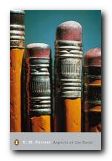 Aspects of the Novel (1927) was originally a series of lectures on the nature of fiction. Forster discusses all the common elements of novels such as story, plot, and character. He shows how they are created, with all the insight of a skilled practitioner. Drawing on examples from classic European literature, he writes in a way which makes it all seem very straightforward and easily comprehensible. This book is highly recommended as an introduction to literary studies.
Aspects of the Novel (1927) was originally a series of lectures on the nature of fiction. Forster discusses all the common elements of novels such as story, plot, and character. He shows how they are created, with all the insight of a skilled practitioner. Drawing on examples from classic European literature, he writes in a way which makes it all seem very straightforward and easily comprehensible. This book is highly recommended as an introduction to literary studies.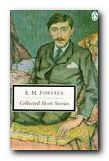 Collected Short Stories is like a glimpse into Forster’s workshop – where he tried out ideas for his longer fictions. This volume contains his best stories – The Story of a Panic, The Celestial Omnibus, The Road from Colonus, The Machine Stops, and The Eternal Moment. Most were written in the early part of Forster’s long career as a writer. Rich in irony and alive with sharp observations on the surprises in life, the tales often feature violent events, discomforting coincidences, and other odd happenings that throw the characters’ perceptions and beliefs off balance.
Collected Short Stories is like a glimpse into Forster’s workshop – where he tried out ideas for his longer fictions. This volume contains his best stories – The Story of a Panic, The Celestial Omnibus, The Road from Colonus, The Machine Stops, and The Eternal Moment. Most were written in the early part of Forster’s long career as a writer. Rich in irony and alive with sharp observations on the surprises in life, the tales often feature violent events, discomforting coincidences, and other odd happenings that throw the characters’ perceptions and beliefs off balance.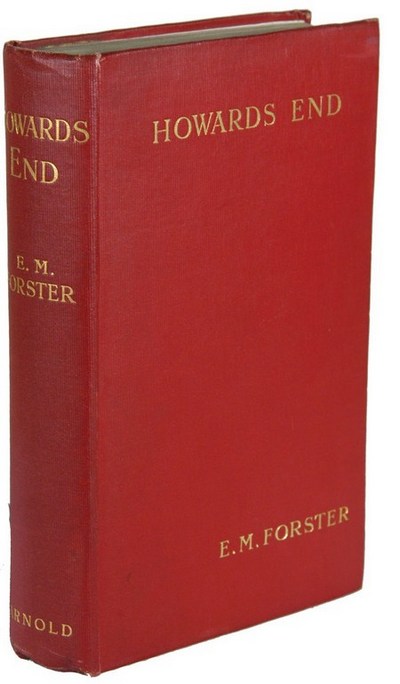
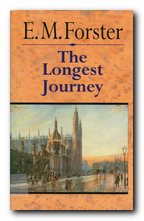
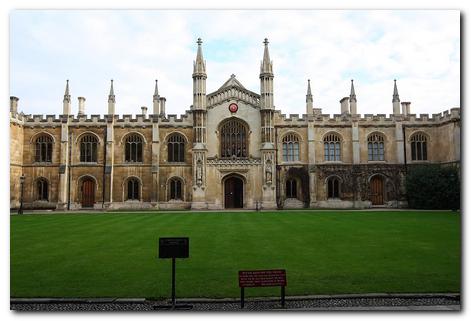
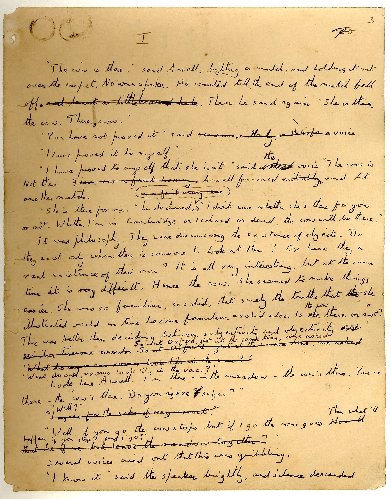

 Lilia Herriton is a young woman whose huband has recently died. Leaving her daughter in the care of her in-laws (whose money she has inherited) she makes a journey to Tuscany with her young friend and traveling companion Caroline Abbott. She falls in love with both Italy and Gino Carella, a handsome Italian much younger than herself, and decides to stay. Furious, her dead husband’s family send Lilia’s brother-in-law to Italy to prevent a misalliance, but he arrives too late. Lilia has already married the Italian and in due course she becomes pregnant.
Lilia Herriton is a young woman whose huband has recently died. Leaving her daughter in the care of her in-laws (whose money she has inherited) she makes a journey to Tuscany with her young friend and traveling companion Caroline Abbott. She falls in love with both Italy and Gino Carella, a handsome Italian much younger than herself, and decides to stay. Furious, her dead husband’s family send Lilia’s brother-in-law to Italy to prevent a misalliance, but he arrives too late. Lilia has already married the Italian and in due course she becomes pregnant.